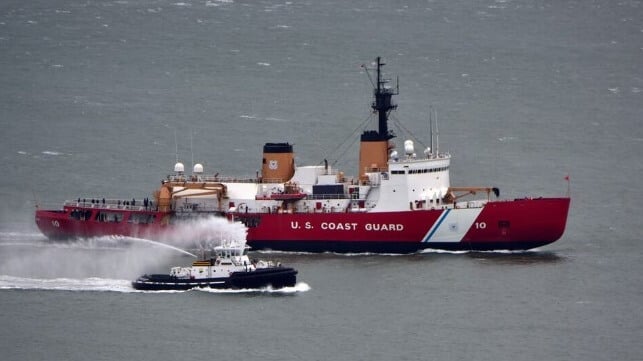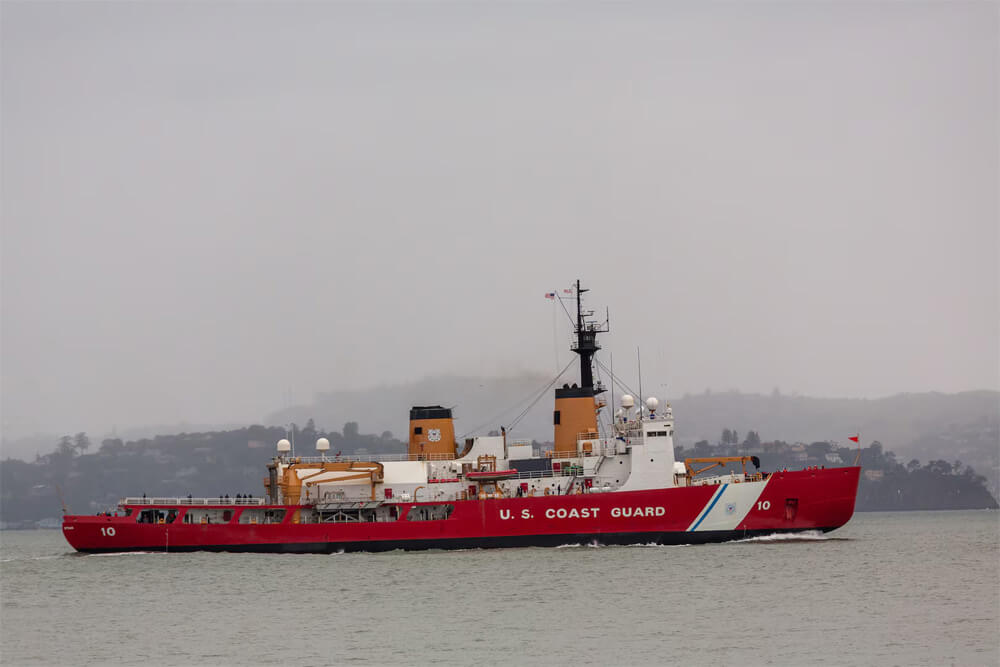USCG Heavy Icebreaker Polar Star Returns Home After 128-day Deployment

The only heavy icebreaker in the U.S. Coast Guard fleet USCG Polar Star arrived back in San Francisco completing her annual deployment to Antarctica and now she is preparing for the final phase of her ongoing life extension. Commissioned in 1976, the USCG needs to keep her operation until at least 2030 when the much-delayed next-generation heavy icebreaker is anticipated to be delivered.
Polar Star departed Seattle bound for Antarctica on November 22, 2024. She traveled over 25,000 miles through the North Pacific, South Pacific, and Southern Oceans returning to San Francisco on March 30. It was a 128-day deployment to Antarctica in support of Operation Deep Freeze (ODF) 2025, the annual joint military service mission to resupply and maintain the United States Antarctic Stations.
The vessel provides heavy icebreaking capabilities to facilitate sealift, seaport access, bulk fuel supply, and cargo handling for two of three permanent U.S. research stations in Antarctica, with NSF McMurdo Station being the largest. The cutter’s icebreaking capabilities enable the safe delivery of critical supplies to sustain year-round operations and support international partnerships in the harsh Antarctic environment.
In Antarctica, this year the cutter encountered 14 miles of fast ice up to six feet thick. At a length of 399 feet, Polar Star is 13,500 tons and has six diesel and three gas turbine engines producing up to 75,000 hp. This gives her the capability of breaking through ice up to 21 feet (6.4 meters) thick and can steam continuously through 6 feet (1.8 meters) of ice at 3 knots.

The only USCG heavy icebreaker, 49-year-old Polar Star will start the final phase of her life extension program (USCG)
During this year’s deployment, Polar Star created a navigable route and cleared Winter Quarters Bay for two cargo vessels and HMNZS Aotearoa to reach NSF McMurdo Station. While operating in McMurdo Sound, Polar Star, and Aotearoa conducted an at-sea crew exchange to build a shared understanding of each vessel’s unique capabilities in the polar regions.
At the conclusion of vessel operations at McMurdo Station, the cutter departed the Antarctic region on March 3 after 60 days. Polar Star made two logistical stops in Pearl Harbor, Hawaii, and Sydney en route to Antarctica. On its journey back to the United States, Polar Star moored in French Polynesia for a community relations stopover.
“But our work isn’t done," said Capt. Jeff Rasnake, Polar Star’s commanding officer. “As we wrap up ODF 25, we must quickly transition to the first phase of ODF 26 – heavy depot maintenance. There’s no time to waste as we work to ensure Polar Star is ready to roll into her 50th year of service.”
Polar Star will enter the final phase of its five-year Service Life Extension Project which is being conducted at Mare Island Dry Dock in Vallejo, California. It calls for recapitalizing targeted systems, including the cutter’s propulsion, communication, machinery control, and auxiliary systems, and conducting significant maintenance to extend the cutter’s service life. Each phase of the life extension has been coordinated so that operational commitments, like Operation Deep Freeze missions in Antarctica, would still be met.
According to the Coast Guard, “Completing SLEP will significantly mitigate the risk of lost operational days due to unplanned maintenance or system failures by replacing obsolete, unsupportable, or maintenance-intensive equipment.”
Next year’s Operation Deep Freeze will be Polar Star’s 29th and will coincide with 50th anniversary of her commissioning.
